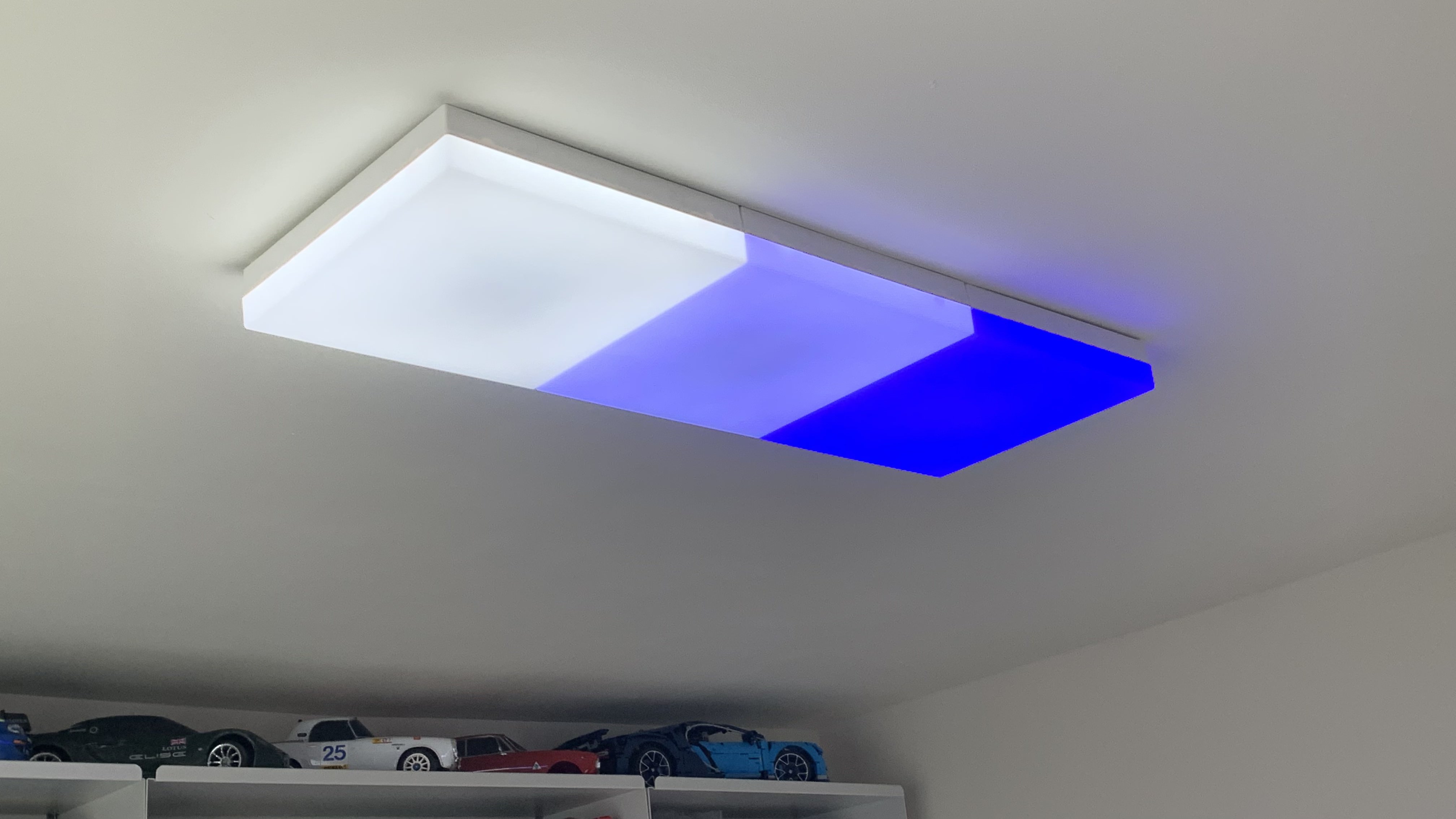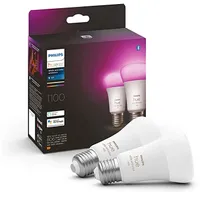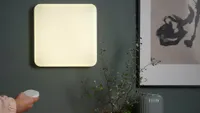TechRadar Verdict
The Nanoleaf Skylight breaks new ground, taking Nanoleaf off the wall, out of the light socket, and directly onto the ceiling while still offering all the usual bells and whistles. The starter pack contains three lights, which can be arranged in several configurations and extended with up to 97 panels of glorious color - but you will need very deep pockets.
Pros
- +
Dimmable, incredibly bright white light
- +
16 million colours
- +
Can be synchronized with your PC or Mac display
- +
Works with Google Home, Apple Home, Alexa and Razer Chroma
Cons
- -
Poor installation instructions and fittings
- -
No Matter or Thread compatibility at the time of writing
- -
Sync+ does not work with the Nanoleaf 4D
- -
Expensive and temperamental
Why you can trust TechRadar
One-minute review
The Nanoleaf Skylight is an alternative indoor lighting solution that can provide everything from strong white lighting to subtle mood lighting in whatever brightness or color you desire, and easily sits among some of the best smart lights. The simple square panel design belies the true nature of the device, which reveals itself once it’s brought to life in brilliant technicolor via the app or PC/Mac software.
It’s not all sweetness and light though. The installation is a bit more involved than the usual Nanoleaf ‘stick the LEDs onto something and plug them into a power outlet’ scenario.
The main panel is the same as any other ceiling light, in that it’s hardwired into the lighting circuit. If you have experience installing traditional light fittings, you shouldn’t find it too challenging, but, as always, get a professional to install it if you’re at all unsure; this is dangerous work.
Once the lights are up and running, you can control them with the free Nanoleaf software for PC, Mac or phone app, and it soon becomes apparent just how flexible the system is. I put it through its paces for a couple of weeks and its performance impressed me. I can see a broad range of uses within my home, but the cost seems prohibitive and I did have a fair few teething issues. So, is it worth the asking price? Read on.
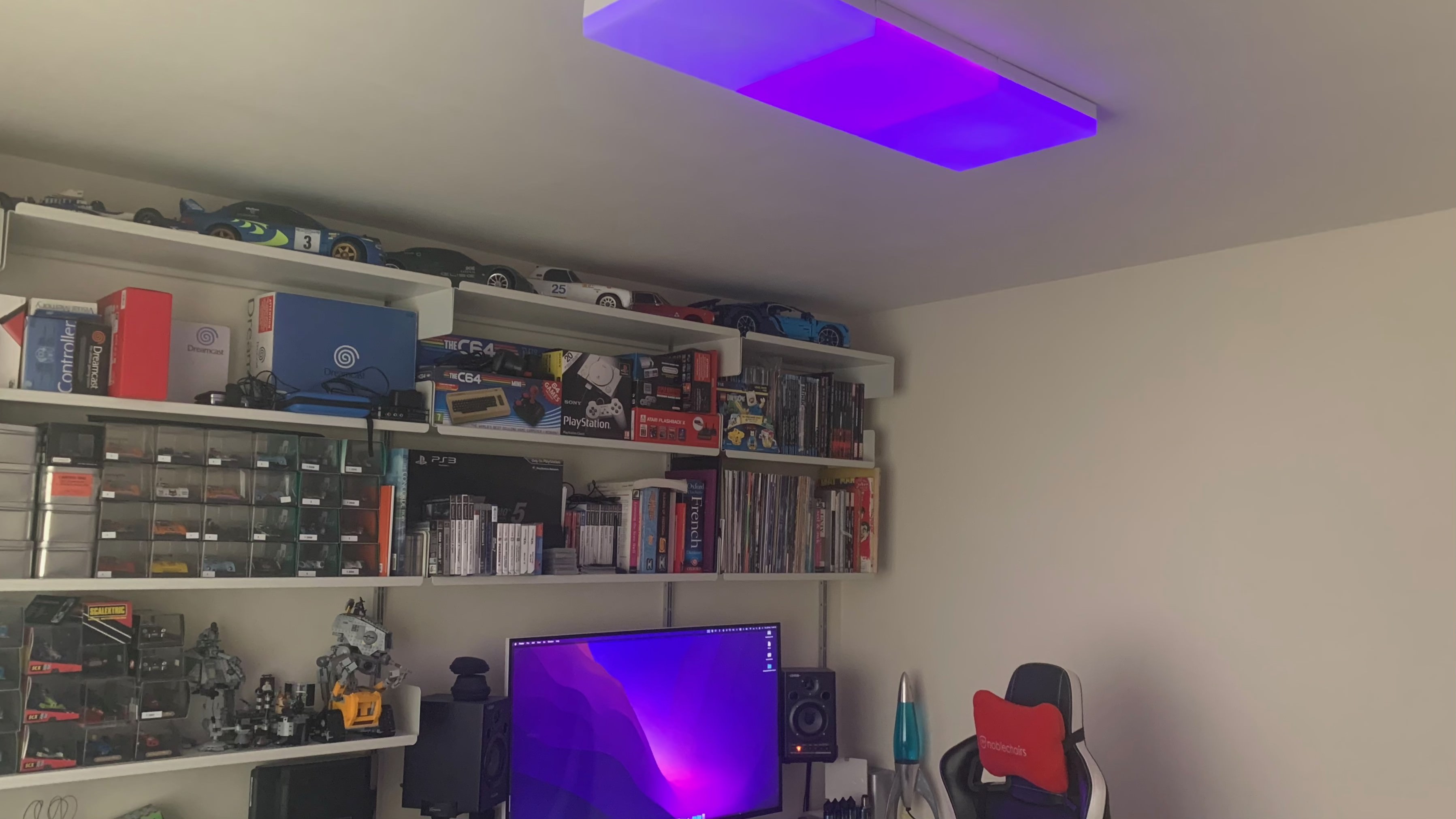
Nanoleaf Skylight review: price and availability
- List price: starts at $249 / £229 / AU$469 for a three-light starter kit. Other options include;
- Expansion pack (1 panel): $69.99 / £69.99 / AU$139.99
- Starter kit (6 pack): $459.96 / £418.61 / AU$609.90
- Starter kit (9 pack): $669.93 / £623.64 / AU$889.90
- Starter kit (12 pack): $879.90 / £828.66 / AU$1,309.90
- Available in the US, UK and Australia
The Nanoleaf Skylight was released in February 2024 and the starter kit is available for $249 / £229 / AU$469 directly from Nanoleaf’s US, UK and Australian websites and Amazon.
The starter pack consists of one main unit, which is wired directly into the mains electricity, and two expansion panels. Larger kits are available from Nanoleaf consisting of six, nine, and twelve lights, and there’s also a single-panel expansion pack.
Nanoleaf Skylight review: Specs
| Dimensions (single panel) | 12 x 12 x 2.17 inches / 300 x 300 x 55mm |
| Output Voltage | 18W controller, 16W at expansion |
| Luminous Per Panel | 1400 lumens |
| Smart home compatibility | Google Home, Amazon Alexa, Apple HomeKit, IFTTT |
| Connectivity | 2.5 GHz Wi-Fi |
| Mobile compatibility | iOS, Android |
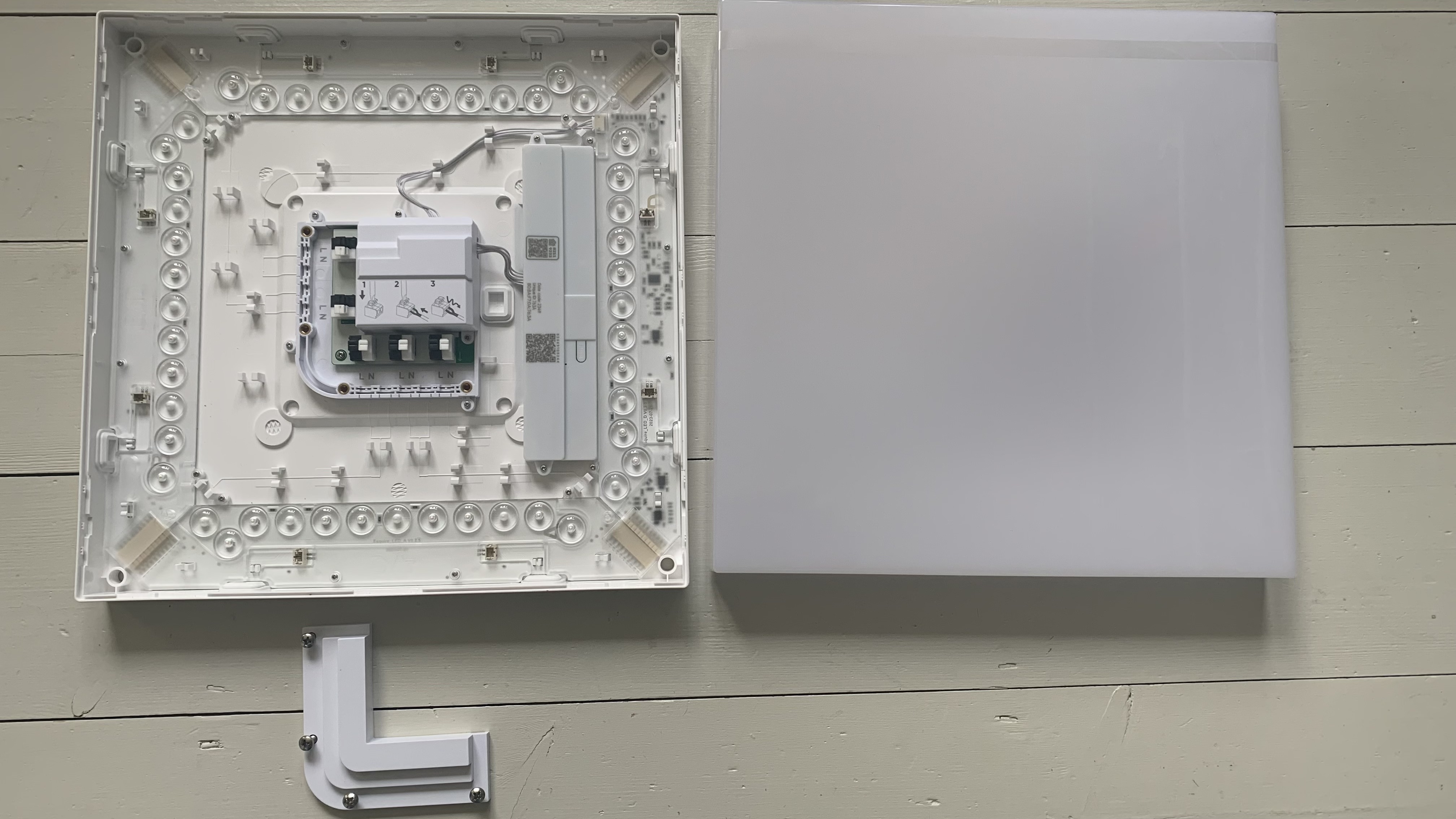
Nanoleaf Skylight review: Design
- Minimalist and unobtrusive (when they’re off)
- Modular design allows for a multitude of configurations
- Unique ceiling-mounted lighting system
Anyone who enjoyed playing on the Atari 2600 in the 70s will get a kick out of the look of these lights. I like the pixel-esque aesthetic and would love to create some huge ceiling icons with a 9x9 square - if only it were possible to control the color for each square individually. I mean, who wouldn’t want a 2.7-square-meter Space Invader or Pac-Man on their ceiling? Unfortunately, that would set me back approximately £5.5k and 1300 Watts, so this vision will forever be a dream.
Sign up for breaking news, reviews, opinion, top tech deals, and more.
The combined equal depths of the housing and diffuser are nicely proportioned to the 300 x 300 face but I’m not completely sold on its shiny surface. Maybe a matt finish wouldn’t diffuse the light so well or look any better, though.
The cable management inside the units is well-designed but a little fragile. Each side has two cable routing holes that allow for some more interesting offset configurations if you don’t just want a symmetrical layout. The rubber bungs for these holes can be left in situ as the cables can be passed through slits in them.
Little features like this make it feel like Nanoleaf spent a great deal of time and effort getting the hardware design right, but then rushed the component selection and software testing. I’ll cover this in more detail in the performance section.
As is the running theme with this review, the Nanoleaf Skylight’s design is akin to the troubled second album by your favorite band. You buy the record because you love what they do but feel they have let you down.
Nanoleaf Skylight review: Installation
If you skipped over the one-minute review, I will reiterate: if you have experience installing traditional light fittings, you shouldn’t find it challenging, but, as always, get a professional to install it if you are unsure.
Your existing wiring will likely be too inflexible to follow the path to the connectors in the Skylight and it only requires two wires. The rest of the wiring must be out of the way above the ceiling. I replicated the connections within the existing light fitting and increased the size of the hole in the ceiling to do this.
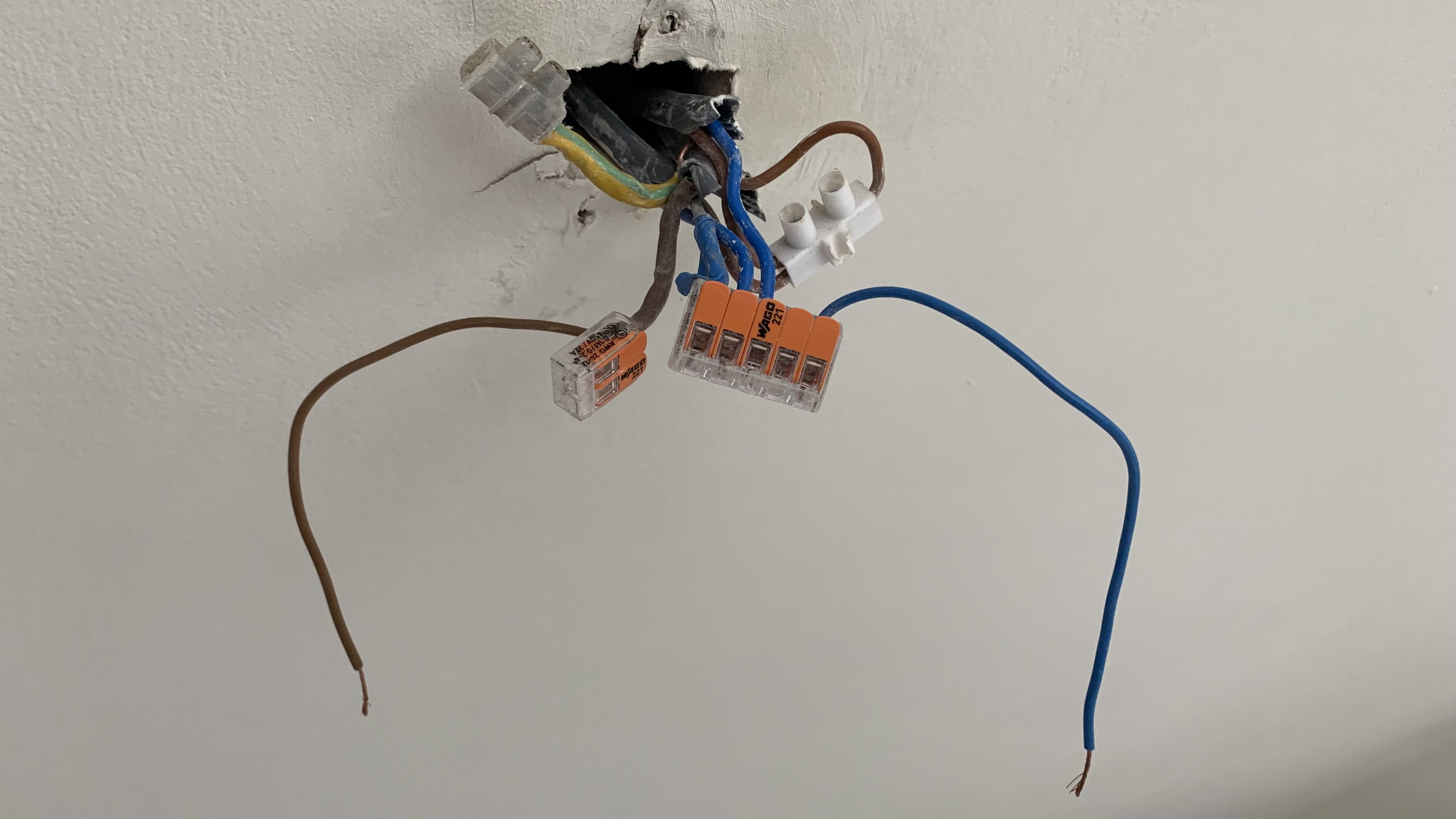
This bundle of wires was never going to fit in the Nanoleaf Skylight.
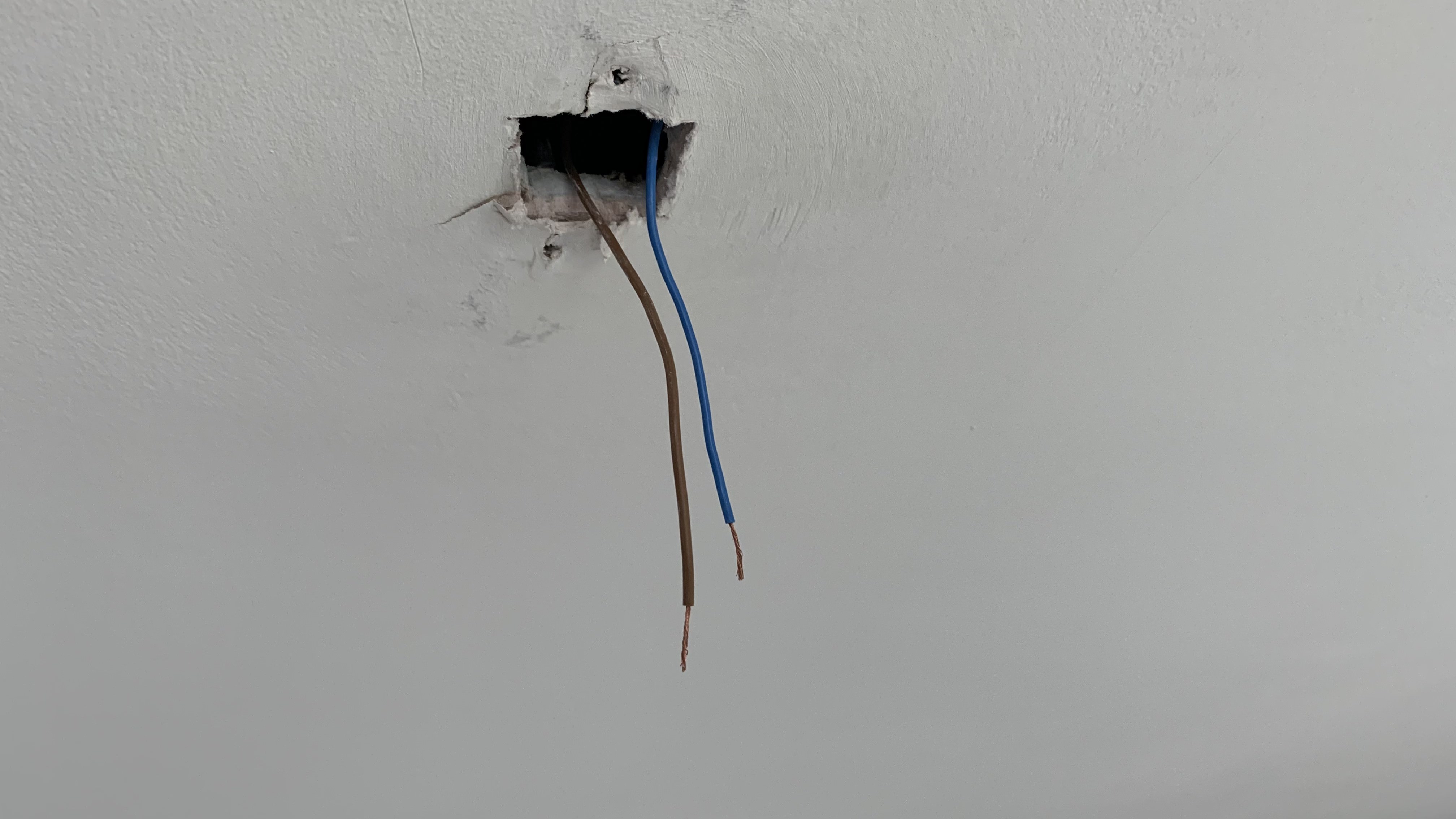
Up, up and away.
The next hurdle is the rather poor installation instructions, which erroneously show the plasterboard self-drilling fittings as being screwed through the housing, for example. In reality, the fittings should screw directly into the ceiling and the screws should go through the housing and into those fittings. I say “should screw directly into the ceiling” as during my installation, two of the supplied fittings broke off in the ceiling before I gave up with them.
Fortunately, I had some more robust metal fittings to hand, which saved the day. To be fair, my ceiling is ‘mature’, and perhaps drilling a 4mm guide hole first would have reduced the mortality rate of the plastic fittings. There are, however, plenty of other inaccuracies in the installation instructions, which add to the confusion. If these instructions were a cake, the missing ingredient would be “care”.
A bit more wiggle room in the screw holes would also be of benefit as screwing or drilling into a ceiling is prone to error unless you are Spider-Man. Usually, fittings have a combination of horizontal and vertical slots that allow for errors made during drilling or screwing. I’d also recommend ensuring that someone is available during installation to provide placement directions, as it’s not easy to get things straight on a ladder facing upwards.
Once the primary unit is up, the others are very straightforward. I found it much easier to install the data wires (the short wires with square connector blocks at the ends) between the light units first, and then push through the power wires. Alternatively, the rubber grommets can easily be removed but they may be needed at a later date, should you want to move or reconfigure the lights. Routing the cables between the lights is made easier by the numerous clips built into the unit for this purpose, but, as I learned when I managed to break one, they are a little fragile.
After restoring power at your dwelling’s fuse box and flicking on your light switch at the wall, the Skylight will initially come on at low brightness. It will then increase in brightness to signify that it’s ready to pair with the Nanoleaf app.
Nanoleaf Skylight review: Performance
The first thing that struck me about the Skylight was how much light it gives off. If you sometimes need a bright, even white light while assembling something or taking things to bits, this light is your friend. It’s reminiscent of old-school fluorescent lighting without the irradiation and mercury poisoning.
The Skylight can, of course, emit any color you wish, but be warned that the color is not uniform across the surface of the diffuser. Inevitably, though, you will need to address the elephant in the room – the Nanoleaf app.
In previous reviews of Nanoleaf products, I’ve described the Nanoleaf app as “wayward”. Perhaps I am just unlucky, but every time I add a new Nanoleaf product to my network there is a period of chaos. Some of the mayhem may be due to the many and varied devices that I have, and the synchronization between the home automation systems and their cloud accounts. Whatever the root cause, there will be a couple of days of rebooting, deleting, and adding devices until everything works again. The app will invariably have a different view of reality, which may or may not change depending on whether you look at it. Schrödinger’s app.
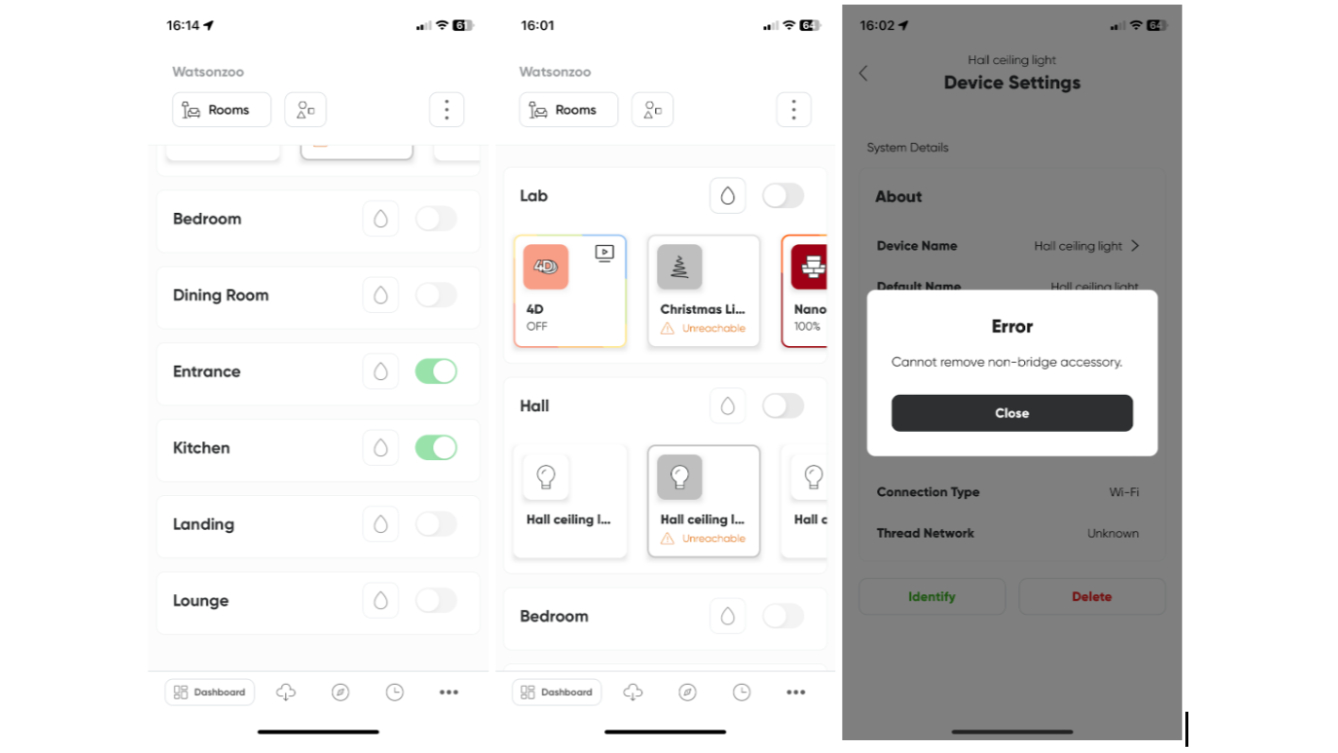
The sense of frustration was further compounded by the hardware itself misbehaving. I had a period where the light was flickering when set to white light at full power. Following this, the unit then point-blank refused to switch on even after I removed the face plate to press the reset button. Flash forward to the time of writing, I can’t replicate the flickering and it has behaved itself consistently for a few days.
It’s like having a cat on your ceiling; you ask it to do something and it will ignore you, show you its backside, and walk away. Schrödinger’s app and cat… On the plus side, the supplied scenes are good, you can create your own or use scenes created by others, and these can all be synchronized and used in Apple Homekit. You could avoid using the Nanoleaf app altogether, but you would miss out on firmware and app updates. It’s a necessary evil.
I have spent many hours with the Nanoleaf app thanks to one of my favorite bits of kit, the Nanoleaf 4D. I was looking forward to using Sync+ to extend the screen colors to the Skylight but, no, it does not work. So, I have two products that support Sync+ but do not support each other… right.
Not to worry, as Nanoleaf should be applauded for developing a desktop app for both PC and Apple Mac (both Intel and Apple Silicon), which offers screen mirroring. The screen mirroring via the desktop app is a great idea and works well with the 3-pack starter kit laid out in a straight line, but I do wonder how the app would know if you have offset your units in a stepped layout. It also didn’t work with all of the games I tried. I wanted to watch a film via Apple TV+ while mirroring the screen to the Skylight, but the Mac was unhappy about sharing. Thank you, Apple.
It’s a similar state of affairs with the rhythm feature – a great idea but it falls at the last fence. You can select which source the sound is coming from, but that doesn’t seem to work as well now as it did when I first received the device. Having said that, it is good enough and as I write the Skylight is gently pulsing color along to the music. Wonderful.
Unlike dumb lights, the best smart lights offer a host of control options but that’s not always a boon with wired lights like the Nanoleaf Skylight. When the Skylight has been powered off at the wall, it will take about a minute to appear online within your home automation system or the app when you flick the switch on again.
Normally that’s not an issue with smart lights, but the problem with the Skylight then becomes the almost imperceptible little ticking noise that the skylight makes when it has power but is not on. It’s akin to Chinese water torture and drives you nuts after a while. I’d strongly recommend using one of the best smart switches for easier control and happier ears.
On top of all this is the lack of Matter support and no built-in thread border router as promised at CES 2023. I like Nanoleaf, I like its ideas and that it makes these feature-rich products happen, but a simple thing like testing could make them so much better.
Nanoleaf Skylight: Should I buy?
Buy it if...
You want a versatile, bleeding-edge, cool-looking Smart light.
I love it, even with all its faults. You will grow accustomed to the app with time and a lot of patience.
You have other Nanoleaf products and are happy with them.
The Skylight makes an excellent addition to any setup, offering brilliant luminance and an epic aesthetic.
You want something other than recessed downlighting.
Recessed downlighting is very effective and unobtrusive, but to light a whole room with lights from competitor brands like Philips Hue would be very expensive.
Don't buy it if...
You are on a budget.
There are ways to light your room for a lot less money. I know, I have most of them. Pendant light fitting, lampshade, bulb, less than $60 / £40 / AU$100, job done.
Your name is Sir Elton John and you prefer chandeliers.
There is a place for things that hang from the ceiling and the Skylight will not suit every setting. I have lights in my house that I would not replace with the Skylight - I hasten to add that none of them are chandeliers.
You don’t want lots of holes in your ceiling.
If you decide that you don’t like it after a while and opt to replace it with something else, you’ll be left with a lot of holes in your ceiling. This also applies to a greater extent with recessed downlighting. A smart bulb, however, is super easy.
You don’t want diffused lighting
If you prefer focused, directional lighting for a specific area in your room or a soft glow somewhere then the Skylight is not for you.
Also consider
The Nanoleaf Skylight is, as far as I’m aware, a unique product, so it is difficult to find a direct equivalent. Here are some alternatives if you want to dip your toe into smart lighting, but don’t want to give it the full beans.
| Header Cell - Column 0 | Nanoleaf Skylight | Single Phillips Hue bulb | Ikea Jetström 100x40 |
|---|---|---|---|
| Colors emitted | 16 Million | 16 Million | 2, White or off |
| Smart light | Yes | Yes | Yes |
| Smart home compatibility | Google Home, Amazon Alexa, Apple HomeKit, IFTTT | Google Home, Amazon Alexa, Apple HomeKit (Via Hue Bridge) | Ikea home smart |
| Screen mirroring | Yes | No | No |
| Sound reactive | Yes | No | No |
Phillips Hue white and color bulb
If you simply want to light a room in a variety of colors with some form of remote control that just works, then it’s difficult to argue against Philips Hue. They provide a wide range of fittings for just about any socket type. There are cheaper alternatives, of course.
Read our full Philips Hue review.
Ikea Jetström 100x40
The Ikea Jetström 100x40 is similar in appearance to the Nanoleaf skylight, is LED, and is a lot cheaper. However, it's hard to find outside of Europe.
Read our full Govee Immersion smart TV lights review.
Nanoleaf Skylight: How I tested
- I used the Skylight for work and play for over a month.
- I tested the PC/Mac application on both platforms where possible.
- I controlled the device from both the Nanoleaf iPhone app and Apple Homekit.
I installed the Skylight in the room where I spend the majority of my time during the dark winter months. I tried to understand what each feature within the application does and how reliable/repeatable they are. Any inconsistencies were investigated but I have yet to find any form of event logging to help me understand exactly what it thinks it is doing.
I powered down my whole house to simulate a power cut to see how it would recover and also rebooted the Wi-Fi router and other devices in my smart home setup at various points.
I kept a log of any updates to the versions of the applications and the device’s firmware. I avoided using Beta versions of the application.
For the majority of the time it performed as expected but it is not bulletproof.
For 20 years, Les has worked in and around software development, meaning he's a pretty dab hand with a computer. Beyond that, he's known as "Gadget-man" to his friends, constantly in search of the latest and greatest tech to geek out over. In his spare time, you'll find Les in his man cave, also known as "the Lab", whether he's trying out 3D modeling and printing, gaming, practicing software development, or playing with electronics. He's a huge F1 fan, a lover of all things Star Wars and DC, and an avid LEGO builder.
